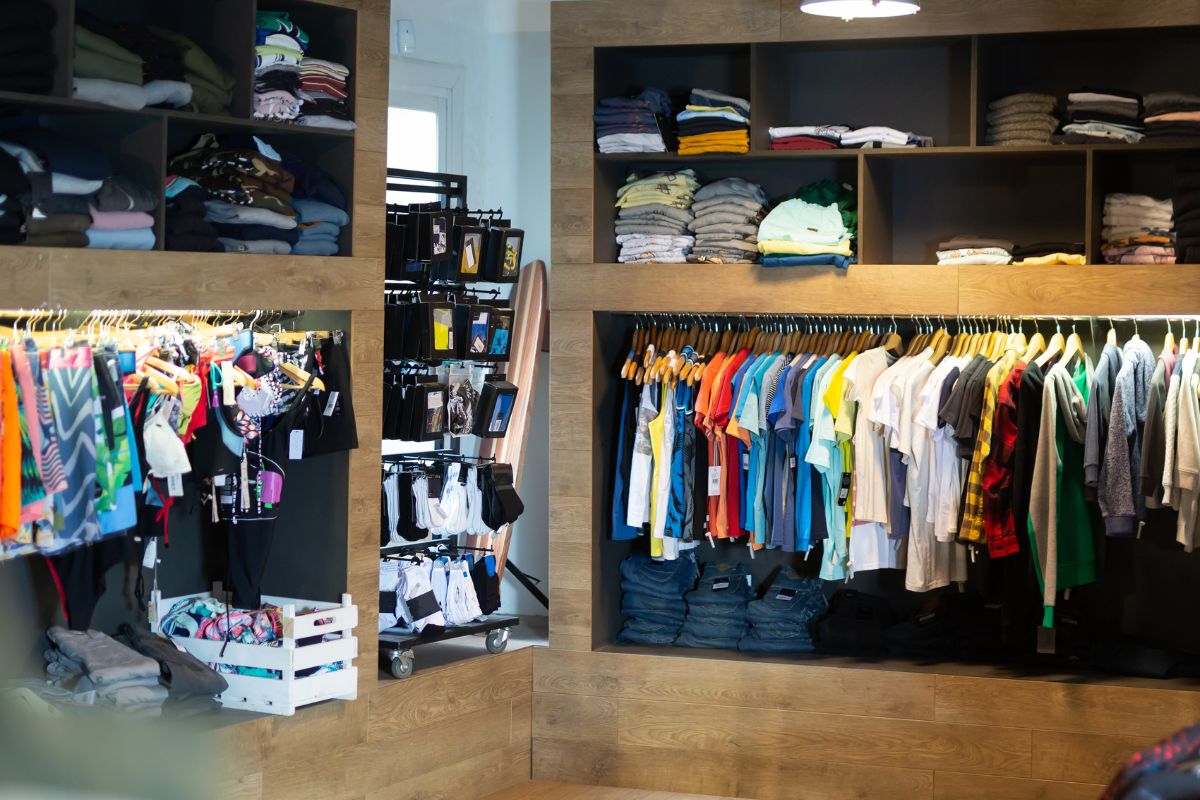Eager to transform your original designs into a profitable business? Learn how to tap into the lucrative world of custom merchandise with this comprehensive guide. This article will walk you through the essentials of capturing your target market, crafting items that stand out, and setting up a user-friendly online storefront.
Table of contents
- Key Takeaways
- Understanding the Market for Custom Merchandise
- Designing Unique and Appealing Merchandise
- Setting Up Your Online Storefront
- Marketing Strategies to Sell Your Merchandise Online
- Managing Orders and Providing Excellent Customer Service
- Scaling Your Merchandise Business for Long-Term Success
- Conclusion
By diving into effective marketing strategies and honing in on customer service excellence, you’ll be equipped to not only launch but also scale your brand for sustained success—sans the egregious fee usually associated with business startups. Whether you’re aiming to launch a new shirt line or expand an existing collection, the insights here will help streamline your path to making an impact with your brand.
Key Takeaways
- Understanding your target audience is critical for product and marketing success
- Efficient order processing and quality customer support are cornerstones of customer satisfaction
- Strategic use of social media and SEO can significantly increase brand visibility
- Expanding product lines and exploring new markets are key to scaling a business
- Continuous industry research and embracing innovations foster long-term growth
Understanding the Market for Custom Merchandise
Navigating the custom merchandise market begins with identifying your target audience, a vital step that informs inventory decisions, manufacturing processes, and price points. In this dynamic market, thorough analysis of current trends can result in substantial investment savings and amplify money-making opportunities. The subsequent content delves into researching competitors and carving out a unique niche, offering entrepreneurs a comprehensive view to strategize their entry and establish a footprint in the print on demand industry.
Identifying Your Target Audience
Delving into the custom merchandise market necessitates identifying a distinct target audience, one whose preferences and needs align with your product offerings, such as Gildan apparel, bespoke with a unique logo. By pinpointing the demographics, interests, and purchasing behavior of your ideal customer, your print on demand venture can tailor its designs and marketing, ensuring that each landing page resonates with its intended audience and drives sales.
Moreover, the mastery of drop shipping facilitates a seamless integration into the business model for print on demand entrepreneurs. Understanding the audience’s expectations not only in terms of product quality but also in delivery speed and service will distinguish your brand in a crowded marketplace. Building customer profiles and harnessing data analytics secures a competitive edge and fosters a customer-centric approach:
- Demographic Analysis: Gathering data on age, gender, income, and location to customize merchandise.
- Interest Assessment: Identifying hobbies and lifestyle attributes to design more relevant products.
- Purchase Patterns: Understanding when and how the target audience shops to optimize marketing efforts.
Analyzing Current Market Trends
In the realm of custom merchandise, staying abreast of social media trends is paramount for any online business aiming to capitalize on the latest consumer behavior shifts. For instance, a surge in visual platforms could infuse life into poster sales, presenting an opportunity for businesses to pivot their marketing strategies accordingly. Moreover, social media also offers a direct channel for engaging with customers, which enhances brand presence and reinforces customer relationships, thus fueling sales.
Another critical trend in the custom merchandise market includes the advancement of logistics in streamlining the delivery of items, such as clothing, to customers. As timeliness and convenience increasingly influence purchasing decisions, optimizing logistics proves essential for businesses in maintaining a competitive edge. Through careful planning and execution, companies can ensure that marketing efforts culminate in not just sales, but in customer delight due to efficient order fulfillment:
| Trend | Impact | Strategy |
|---|---|---|
| Social Media Influence | Increases brand visibility and engagement | Employ targeted campaigns on popular platforms |
| Advancements in Logistics | Enhances customer satisfaction with faster delivery | Invest in efficient distribution and tracking systems |
Researching Competitors and Finding Your Niche
In the bustling eCommerce landscape, thoroughly researching competitors is a pivotal step for entrepreneurs aspiring to sell custom merchandise online, such as graphic-designed mugs or mockup templates. This research involves a deep dive into the existing offerings, pricing structures, customer service models, and marketing tactics of other businesses in the space, enabling new entrants to determine the market saturation and identify potential gaps they can fill with their unique value propositions. Savvy operators use this intelligence to develop a more appealing and differentiated product suite that stands out in the digital marketplace.
For those venturing into the realm of personalized merchandise, finding an unexploited niche can serve as the cornerstone of a flourishing online store. Specialized products, expertly aligned with specific customer preferences, from unique stock designs to bespoke graphic design services, possess the power to captivate a loyal customer base. They underscore the importance of understanding subtle market nuances to cater to underserved segments while elevating customer service and product quality as prime differentiators. Establishing a niche position can effectively reduce competition and garner higher margins for businesses ready to innovate in this field.
Designing Unique and Appealing Merchandise
| Tip | Description | Why It’s Effective |
|---|---|---|
| 1. Understand Your Target Audience | Research audience preferences, style trends, and desired product types. | Helps create designs that resonate and increase purchase interest. |
| 2. Focus on Original Artwork | Use unique illustrations, patterns, or quotes to differentiate from competitors. | Builds brand identity and attracts customers seeking originality. |
| 3. Prioritize Quality Materials | Choose high-quality fabrics, inks, and printing techniques. | Ensures durability, enhancing customer satisfaction and loyalty. |
| 4. Experiment with Bold Colors and Fonts | Use eye-catching colors and fonts that align with your brand’s vibe. | Makes merchandise visually attractive, improving brand recall. |
| 5. Create Limited-Edition Collections | Launch special, time-limited designs to create urgency and exclusivity. | Encourages quick purchases and increases perceived value. |
| 6. Incorporate Trends Thoughtfully | Integrate popular trends, like vintage or eco-friendly themes, without compromising uniqueness. | Keeps designs relevant and appealing to modern buyers. |
| 7. Offer Customization Options | Allow customers to personalize items with names, colors, or quotes. | Enhances customer connection to the product and increases value. |
| 8. Use Mockups to Visualize Designs | Create digital mockups to visualize how designs look on various products. | Helps in refining designs and aids marketing with realistic previews. |
| 9. Add Engaging Design Elements | Use graphics, textures, or layering techniques for a more dynamic look. | Makes products stand out and appear more professional and detailed. |
| 10. Gather Customer Feedback | Use surveys or social media to get feedback on designs before launching. | Helps refine designs and increases the likelihood of positive reception. |
Success in creating and selling custom merchandise online hinges on not only selecting the right products but also crafting designs that strike a chord with your audience. Mastering the use of design tools and ensuring the production of quality, durable items can transform this venture into a lucrative revenue stream. The following segments delve into tactics for making custom merch that captivates customers, detailing the use of advanced screen printing techniques and other resources essential for building a substantial revenue stream through personalized products.
Selecting the Right Products to Customize
Selecting the right products for customization is the cornerstone of successful merchandising. For those looking to make their own merch, choosing items such as hoodies or t-shirts is strategic, not only because they are perennially popular, but also because these items offer broad canvases conducive to creativity and advertising. Integrating market research with knowledge of your target demographic will guide the selection, ensuring the products resonate with your intended audience and lead to repeat purchases.
Success hinges on a balance between popular appeal and the unique branding that personalization offers. As the print on demand market thrives on novelty, business owners are encouraged to explore trending products while infusing them with original designs that align with brand identity. The process becomes not just about selling an item, but about merchandising a concept that consumers find compelling enough to share:
| Product | Appeal | Customization Potential |
|---|---|---|
| Hoodie | High | Large print area, suitable for bold designs and slogans |
| Accessory | Moderate | Detailed work for niche audiences, perfect for subtle branding |
| Home Decor | Emerging | Diverse range for unique expressions of persona |
Creating Designs That Resonate With Your Audience
Creating designs that resonate with your target audience involves a deep understanding of their preferences and expectations, which are often shaped by the dynamic nature of online shopping. When designing a tote bag, for example, incorporating elements that reflect the current interests and social media influences of the intended demographic can significantly enhance the appeal of the product. It’s crucial for entrepreneurs to not only forecast trends but to also adapt quickly, ensuring that their designs remain relevant and desirable, thereby prompting customers to reach for their credit card at the point of sale.
To truly connect with an audience through custom merchandise design, one must transcend beyond aesthetic appeal and delve into the emotional and practical desires of consumers. Designs should address the dual aspects of functionality and personal expression, ensuring that a tote bag is not merely a container for belongings but also a statement piece that reflects an individual’s identity. By aligning product design with these insights, print on demand companies can craft merchandise that not only attracts attention but also sustains it, paving the way for repeat engagement and loyalty.
Utilizing Design Tools and Resources Effectively
Utilizing design tools effectively is paramount in the custom merchandise sector, as it directly impacts the profit margin by minimizing overhead while enhancing the creative offering. Entrepreneurs can use sophisticated yet user-friendly graphic design software to create compelling visuals that can transform a square piece of fabric into a coveted fashion statement. By leveraging these resources, businesses optimize their income potential through highly customized and appealing product lines that garner positive customer feedback.
Moreover, the integration of customer feedback into design processes can act as a crucial tool for adjusting and refining product offerings to meet market demands. This dynamic approach ensures that the merchandise remains relevant and desirable, which is key to sustaining and growing income for print on demand companies. Utilizing design tools that allow for swift iterations based on consumer insights can lead to improved customer satisfaction and, in turn, contribute significantly to a stronger brand reputation and higher profit margins.
Ensuring Quality and Durability in Your Merchandise
The longevity of custom merchandise is fundamental to establishing brand reputation and fostering word of mouth recommendations. Print on Demand companies must rigorously ensure that every bag, garment, and accessory is crafted using high-quality materials and enduring printing techniques. This adherence to quality not only cultivates customer satisfaction but also reinforces a loyalty program, thus fostering repeat business and maximizing long-term profit while balancing production cost.
In the competitive online marketplace, the durability of custom products is a critical determinant of consumer trust and business viability. Companies aiming for success in the custom merchandise sector must implement quality control measures and collaborate with reliable suppliers to guarantee that each item meets stringent durability standards. By delivering merchandise that withstands the test of time, businesses reinforce their commitment to excellence, which directly translates to sustained customer engagement and profit enhancement.
Setting Up Your Online Storefront

Setting up an efficient online storefront is a cornerstone in the pursuit of successful custom merchandise sales. Choosing the best e-commerce platform aligns with the business’s budget and operational scope, while crafting product listings with compelling descriptions helps attract buyers who may be looking for that distinctive hat or sticker to express their personality. Implementing secure payment and shipping options is crucial to ensure customer trust and transactional safety. Adding to this foundation, enhancing the user experience on the website with intuitive navigation and the strategic use of hashtags can further boost product visibility and conversion rates. These steps collectively create a seamless purchasing journey for customers and a robust sales system for businesses.
Choosing the Best E-Commerce Platform for Your Needs
Selecting an e-commerce platform is a fundamental decision for those looking to sell merchandise online. The ideal platform should not only display graphics vividly but also accommodate products that sell well online effectively. As a Print on Demand business, one should look for features such as robust product customization options, reliable hosting with minimal downtime, and a system that seamlessly manages a high volume of products that sell the most online.
A practical consideration for businesses aiming to sell merch online is the integration capacity of the chosen platform with other tools and services. For example, analytics for tracking customer behavior and marketing software are crucial for understanding and expanding their reach. The following table illustrates key attributes to consider when choosing an e-commerce platform for selling custom apparel and merchandise:
| Feature | Benefit | Consideration for Merch |
|---|---|---|
| User-friendly Interface | Enhances customer experience | Simple navigation for product categories |
| Customizability | Branding and design control | Unique storefront to represent brand identity |
| Scalability | Supports business growth | Handles an increasing range of products efficiently |
Crafting Product Listings That Attract Buyers
Crafting compelling product listings is a critical aspect for entrepreneurs looking to sell merchandise online for free. These listings should encapsulate the essence of the merchandise, detailing the design inspiration, material quality, and potential uses to captivate potential buyers. The key is to create a narrative for the product that appeals to the customer’s desire for uniqueness and personal expression.
To maximize the impact of product listings, it’s essential to integrate SEO-friendly terms that resonate with the target market while avoiding jargon that may confuse the audience. Employing high-quality images and a clear, evocative description enhances the listing’s visibility and encourages engagement, thus simplifying the customer’s pathway to making a purchase on your online storefront.
Implementing Secure Payment and Shipping Options
Implementing secure payment and shipping options forms the backbone of a reliable online storefront in the custom merchandise business. To build trust and ensure a safe shopping experience, Print on Demand companies must integrate reputable payment gateways that protect customer information using encryption and comply with PCI DSS standards. The selection of these services directly affects the customer’s perception of the brand and can significantly influence their purchasing decisions, positioning the business as a secure and customer-focused entity.
Equally important is the establishment of dependable shipping practices which reinforce customer satisfaction and loyalty. Print on Demand entrepreneurs are encouraged to partner with trustworthy logistics providers that offer transparent tracking systems and timely delivery services. By doing so, businesses secure their reputation for reliability, which is critical when selling custom merchandise online, as customers expect their personalized items to be both immaculately crafted and promptly delivered.
Enhancing User Experience on Your Website
Enhancing the user experience on a website is paramount for print on demand companies looking to captivate and retain customers. An intuitive interface, with clear categorization and a streamlined checkout process, directly impacts the likelihood of converting visitors into buyers. By simplifying navigation and minimizing page load times, businesses ensure that users can easily find and purchase their desired custom merchandise quickly and without frustration.
Additionally, personalization features such as live previews of custom-designed merchandise instill confidence in purchase decisions and increase user engagement. Websites should offer tools that allow customers to visualize their customizations in real-time, thereby enhancing the buyer’s journey from product selection to final checkout:
- Intuitive Design Tools: Enable customers to see their custom designs on products instantly.
- Real-time Customization Previews: Provide a visual confirmation of the product prior to purchase.
- Mobile Responsiveness: Ensure the website is fully functional across all devices.
Marketing Strategies to Sell Your Merchandise Online

In the competitive landscape of selling custom merchandise online, adopting effective marketing strategies is fundamental for business growth. Leveraging social media can dramatically expand your reach, while building an email list nurtures a direct line of communication with engaged subscribers. Strategic partnerships with influencers and affiliates extend your brand’s influence, and integrating search engine optimization (SEO) enhances your online visibility. Additionally, inducing customer action through periodic promotions and special offers can significantly boost conversions and sales. These tactics, detailed in the upcoming sections, are essential for a print on demand company’s success in today’s digital marketplace.
Leveraging Social Media to Reach a Wider Audience
Leveraging social media is an indispensable strategy for print on demand businesses to expand their audience and showcase their custom merchandise. By engaging with users through platforms where potential customers spend much of their time, such as Instagram and Facebook, businesses can create interactive campaigns that highlight their unique offerings, establishing a solid brand presence.
Incorporating social media advertising into their marketing mix allows businesses to target specific demographics and interests, resulting in highly focused outreach efforts. Authentic engagement through user-generated content, like customer photos wearing a custom-printed tee or using a personalized mug, can amplify reach and build a community around the brand.
| Platform | Strategy | Outcome |
|---|---|---|
| Visual showcases, influencer collaborations | Increased brand visibility and engagement | |
| Targeted ads, community groups | Direct traffic to online store, higher conversions | |
| Hashtag campaigns, timely interactions | Real-time customer engagement, quick feedback |
Building an Email List and Engaging Subscribers
Building an effective email list is crucial for print on demand businesses looking to develop enduring customer relationships. This digital asset allows for direct communication with engaged users, offering a platform to share new product launches, exclusive deals, and insightful content that reinforces brand loyalty. Companies should focus on strategically placing email sign-up prompts across their website and social media channels, ensuring opt-in opportunities capture the interest of potential subscribers who are already demonstrating affinity toward the custom merchandise niche.
Once established, engaging subscribers becomes pivotal to maintaining a thriving email list. It’s essential that each dispatch delivers value, fostering a positive impression of the brand. Regularly scheduled emails with cohesive themes, personalized recommendations, and exclusive subscriber-only content pave the way for a more engaged audience. Print on demand entrepreneurs can utilize email analytics to refine their email marketing strategy constantly, ensuring deliverables meet subscriber expectations and enhance their bond with the brand, all while encouraging repeat visits to the online store.
Collaborating With Influencers and Affiliates
Engaging with influencers and affiliates offers print on demand companies a unique channel to amplify their online presence and promote their custom merchandise. By partnering with individuals who have established trust and a sizable following within a specific niche, businesses can tap into pre-existing audiences, leveraging the influencer’s credibility to promote their brand. These collaborations can range from sponsored posts that showcase a company’s custom clothing line to affiliate programs where influencers earn a commission for driving sales through unique referral links.
Affiliate marketing expands the reach of a print on demand enterprise, connecting with potential customers through trusted voices in the industry. Companies can craft bespoke affiliate programs tailored to their merchandise, encouraging content creators to share their designs with targeted communities. By implementing this strategy, print on demand businesses can convert the influencer’s followers into customers, resulting in increased traffic and enhanced sales potential:
- Identify compatible influencers whose audience aligns with your brand.
- Develop mutually beneficial collaboration proposals or affiliate terms.
- Measure the impact of influencer partnerships on traffic and sales.
Utilizing SEO to Increase Online Visibility
Utilizing Search Engine Optimization (SEO) is crucial for enhancing online visibility for print on demand companies and their custom merchandise lines. Incorporating relevant keywords into product descriptions, blog posts, and meta tags can significantly improve a website’s ranking on search engine results pages. A well-implemented SEO strategy ensures that potential customers will find the online storefront when searching for custom clothing, accessories, or home decor, thereby driving organic traffic and sales.
Moreover, SEO practices such as creating backlinks and optimizing website speed not only position a brand more favorably in the eyes of search engines but also improve the user experience. For businesses in the custom merchandise market, a strong online presence anchored by SEO increases the likelihood of converting browsers into buyers, with each product page optimized to attract and retain the target audience’s attention.
Running Promotions and Special Offers
Running promotions and special offers is a strategic approach that can stimulate consumer interest and accelerate sales for a print on demand business. By portraying a sense of urgency or exclusivity, such as time-limited discounts or buy-one-get-one-free deals, these tactics can effectively attract new customers and reengage existing ones. It is crucial for online merchants to carefully plan these offers to coincide with key shopping periods or product launches, ensuring they maximize their impact on revenue and customer acquisition.
Furthermore, special offers that encourage sharing on social media platforms can provide a significant boost to an online store’s visibility. For instance, a promotion that rewards customers for referrals or reviews with a discounted custom product can foster a community of brand advocates. This type of strategy not only increases the reach of the business but also builds social proof, which can be pivotal in establishing trust with potential buyers navigating the world of custom merchandise online.
Managing Orders and Providing Excellent Customer Service

Streamlining order fulfillment processes and offering responsive customer support are integral to the success of an online custom merchandise business. Expert handling of returns and refunds builds trust and credibility, while actively gathering and implementing customer feedback is essential for continuous improvement. The subsequent sections detail strategies for optimizing these aspects of customer service, ensuring a seamless experience that contributes to a thriving print-on-demand operation.
Streamlining Order Fulfillment Processes
Streamlining order fulfillment processes is a critical element for a print on demand company to keep pace with customer expectations and manage inventory efficiently. By adopting automated order processing systems, businesses can reduce the latency between sale and shipment, ensuring that custom merchandise reaches customers swiftly and accurately. The integration of such systems smooths the path from production to delivery, reinforcing the brand’s reputation for reliable and prompt service.
Furthermore, coupling real-time inventory tracking with predictive analytics enables Print on Demand businesses to anticipate demand and manage stock levels proactively. This foresight minimizes the risk of overselling and backorders, preserving customer trust and circumventing potential dissatisfaction. Print on Demand entrepreneurs who prioritize efficient order fulfillment affirm their commitment to operational excellence, ultimately propelling customer satisfaction and repeat business.
Offering Responsive Customer Support
Offering responsive customer support is fundamental in the online sale of custom merchandise, as it solidifies customer trust and loyalty. A prompt and efficient resolution of inquiries and issues assures customers that their satisfaction is a top priority. This aspect of service becomes especially crucial for print on demand companies, where each product often reflects personal customer choices and expectations.
Ongoing training for support staff on product knowledge, as well as the use of advanced customer service software, ensures that all customer interactions are handled professionally and effectively. The ability for a team to provide quick, yet comprehensive solutions to any problem – from shipping queries to product customization concerns – reflects a company’s dedication to exceptional service, thereby nurturing a positive brand image and a stable customer base.
Handling Returns and Refunds Professionally
Print on Demand businesses focusing on custom merchandise must address returns and refunds with professionalism to maintain customer trust and brand integrity. Clearly stated return policies that are easy to find and understand reassure customers, facilitating a sense of security with their purchases. Companies should handle each return request diligently, ensuring that their processes are streamlined and transparent, thus enhancing customer confidence and loyalty.
Furthermore, when refunds are necessary, it’s imperative for businesses to process them promptly. Efficient refund procedures underscore a commitment to customer satisfaction and can turn potentially negative experiences into opportunities for positive engagement. Such professionalism not only assists in customer retention but also bolsters the brand’s reputation for reliability, which is invaluable in this competitive niche:
| Aspect | Impact | Action |
|---|---|---|
| Clear Return Policy | Builds consumer confidence | Ensure easy accessibility and comprehension |
| Diligent Request Handling | Promotes customer loyalty | Streamline processes for efficiency |
| Prompt Refund Processing | Enhances brand reliability | Handle refunds quickly and transparently |
Gathering and Implementing Customer Feedback
Gathering customer feedback is a critical process for any print on demand company striving to improve its custom merchandise offerings. This invaluable data provides direct insight into customer preferences and experiences, allowing businesses to align their products and services more closely with customer expectations. Print on demand merchants use customer feedback to refine design options, improve user interface on online platforms, and tailor marketing strategies to better meet consumer needs.
Effectively implementing customer feedback goes beyond simple data collection; it requires carefully considering the input and taking actionable steps to enhance the customer experience. For online merchants specializing in custom merchandise, this often translates to optimizing product quality, adjusting print techniques, or revising return policies. By actively responding to customer feedback, print on demand businesses demonstrate a commitment to service excellence, which can lead to increased customer loyalty and a stronger market position.
Scaling Your Merchandise Business for Long-Term Success

Scaling a merchandise business for long-term success demands a strategic approach, informed by robust sales data analysis, to make well-founded decisions. Introducing new product lines requires careful planning to meet market demands without overextending resources. Expanding into new markets and international shipping options can catalyze growth, while building brand loyalty and community engagement solidify a company’s standing. Staying current with industry changes and innovations ensures the business remains competitive and adaptable, prepared for sustainable growth.
Analyzing Sales Data to Inform Decisions
Analyzing sales data is an indispensable step for businesses aspiring to scale in the custom merchandise sector, providing actionable insights into consumer behavior, product performance, and market trends. By evaluating data trends, such as best-selling items or peak sales periods, Print on Demand companies can make data-driven decisions that align with their growth strategy and optimize their product offerings for increased profitability.
Moreover, sales data analysis helps entrepreneurs to identify areas of underperformance, enabling them to refine their approach to marketing, pricing, and inventory management. By concentrating on metrics such as conversion rates and average order value, Print on Demand businesses can streamline operations, personalize customer engagements, and enhance the overall efficiency of their sales funnel, paving the way for sustained expansion and success.
Expanding Your Product Line Strategically
Expanding a product line within the custom merchandise business requires measured decision-making and an understanding of market demands. When introducing new items, the online merchant must guarantee that these offerings not only complement the existing suite but also satisfy emerging customer needs. This strategic addition should be backed by thorough research and analysis to align product expansion with the company’s core competencies, ensuring a seamless integration into the current lineup.
To ensure long-term success, a business must consider the scalability of new products from the outset. It’s essential to assess the feasibility of production and fulfillment processes, and to project the potential customer base expansion that would justify the addition. Businesses that approach product line expansion with a strategic mindset tend to find that their new offerings can open up additional revenue streams and strengthen the brand’s position in the competitive online marketplace.
Exploring New Markets and International Shipping
Exploring new markets is a strategic move for print on demand businesses looking to scale and diversify their customer base. By targeting untapped geographic regions where demand for custom merchandise is on the rise, businesses can unlock novel revenue streams and reduce reliance on their existing markets. This expansion requires a comprehensive understanding of local consumer preferences, potential cultural nuances, and the ability to adjust marketing tactics accordingly to resonate with the new audience.
Additionally, international shipping presents an opportunity for print on demand companies to serve a global customer base, but it also introduces complexities such as logistics management, customs regulations, and shipping costs. Successful businesses navigated these challenges by partnering with experienced fulfillment services, leveraging technology for shipping efficiency, and consistently monitoring international market trends to adapt their operations. These actions not only facilitate a smooth entry into global markets but also establish the business as a reliable and accessible provider of custom merchandise worldwide.

Building Brand Loyalty and Community Engagement
Building brand loyalty in the realm of custom merchandise hinges on forging meaningful connections with customers, transforming them from one-time buyers into brand advocates. Successful print on demand companies cultivate this allegiance by consistently delivering exceptional product quality, fostering transparent communication, and recognizing customer dedication through rewards and appreciation programs. This dedication to nurturing customer relationships is paramount in establishing a reliable and cherished brand in a competitive online marketplace.
Community engagement further amplifies the impact of your print on demand business, creating a collaborative platform where customers feel valued and heard. By actively participating in social media conversations, hosting virtual events, and soliciting customer input for new designs, businesses can create a thriving community around their brand. This approach not only enriches the customer experience but also garners invaluable insights, driving innovation and alignment with the evolving desires of the market.
Staying Updated With Industry Changes and Innovations
Staying updated with industry changes and innovations is a critical aspect of scaling a custom merchandise business. Print on demand companies must remain vigilant and adaptable, integrating emerging technologies and market trends into their business strategy to stay competitive. Through continuous learning and adopting new practices, these businesses ensure they meet evolving consumer expectations and maintain their edge in the online custom merchandise arena.
Subsequently, as the e-commerce landscape evolves, savvy print on demand entrepreneurs invest in research and development to keep their offerings fresh and appealing. Aligning with advancements such as augmented reality for virtual try-ons or eco-friendly printing materials can significantly enhance the customer’s shopping experience and bolster the company’s commitment to innovation. By proactively adapting to changes, they solidify their market position and pave the way for sustainable growth and profitability.
Conclusion
Creating and selling custom merchandise online demands a strategic approach, starting with a keen understanding of the target audience and current market trends to tailor product offerings for maximum appeal. Effective use of online platforms, from the choice of an e-commerce system to implementing SEO and crafting engaging product listings, enhances visibility and drives sales. Providing exceptional customer service, including responsive support, streamlined order fulfillment, and a clear returns policy, builds brand loyalty and customer trust, which are paramount for long-term success. Ultimately, staying abreast of industry developments and innovating product lines in response to consumer feedback ensures the sustainable growth of a custom merchandise business in the dynamic online marketplace.




